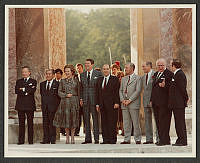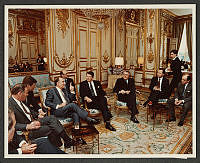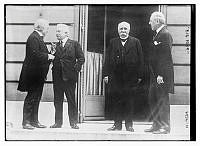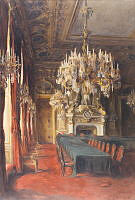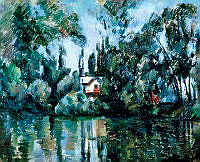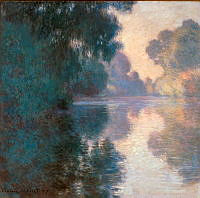Morning on the Seine, Good Weather, White House Collection
This landscape of the Seine River in France is by renowned French Impressionist Claude Monet. The calm, tranquil depiction of the Seine was a gift of the Kennedy family in memory of President John F. Kennedy. Monet produced a series of paintings of the Seine during a single stretch in 1896-1897.
